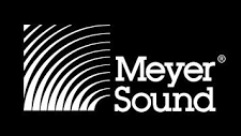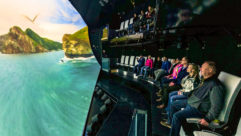As we go to press, it’s still 2021 and Meyer Sound Constellation is officially 15 years old, though its roots reach back decades further, all the way to Canberra Australia in the 1980s when Steve Ellison was a young computer musician chasing spatial audio and starting the algorithms that would become Constellation and SpaceMap.
My most memorable encounter with Constellation was ten years ago, when Cirque du Soleil’s pioneering sound designer Jonathan Deans had figured out ways to use it as only an artist can. Cirque used Constellation to manage the room acoustics, and it also utilized the embedded Spacemap within Constellation to swoop the sound around in a distinctly Cirque-y way.
Steve had invited me to sit in the then Kodak Theater in Los Angeles while he and the Cirque gang commissioned the system into the wee hours. As anyone who has ever witnessed that on/off experience of Constellation, it is a thrill. Push a button, change a room. Obviously it’s not that simple under the hood.
As a former ballerina, I was blown away by how significantly Constellation would bring the performers and the audience together. The Kodak Theater, normally great for the Oscar broadcast it hosted once a year, was otherwise entirely Saharan in its ambience. My performer brain naturally recoiled at the emptiness all around me. We were there to fix that. Well, they were. I was there to listen and learn. Cirque had discovered Constellation’s ability to provide that vital feedback—the performers hearing the audience, the audience hearing each other—the cues that tell people it’s a shared and wonderful experience.
It was a long evening. Ten years ago, Constellation was not as productized as it is today and it took skill and time to wring it out. Ellison marvels today at what the Meyer team was able to do, building Constellation into an industry flagship. “There’s a process,” he says, “and 100 people along the way who make that possible, from tech development to architects and installers, to the artists who make it all worthwhile.”
Ellison himself stepped back from Constellation a few years ago and turned back to SpaceMap—now manifested as the SpaceMap Go app—one of the most powerful and accessible gateways to spatial audio. It’s Ellison’s way to give audio geeks what he wanted in the 1980s when all this began for him. So how does Ellison feel 30+ years on? “Gratified” he answers without hesitation. “It’s something I’ve seen the value in and been interested in for 36 years. It’s been a long time. A couple things have made it possible now—the tech has caught up to the desire, both in computing power and in user interfaces to harness it. Now with Apple and Dolby bringing it mainstream it will accelerate even more and make spatial audio available to more artists and listeners. The future will see further integration between active acoustics and spatial audio I think. Those tools will continue to come together in the hands of people with imagination. It’s great when you help develop something and then other people make it sing.”
May we all be able to say that on the anniversaries of our passions. Happy New Year.








